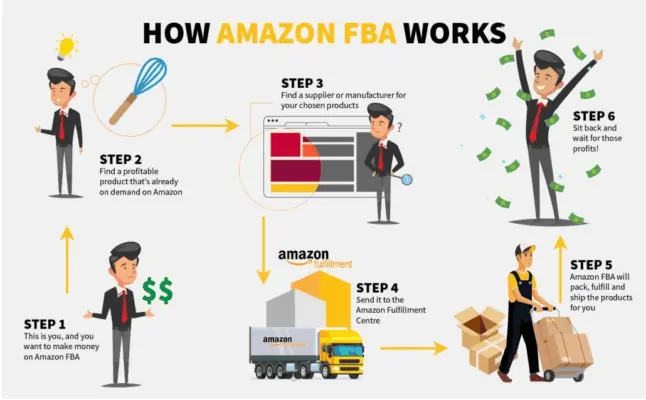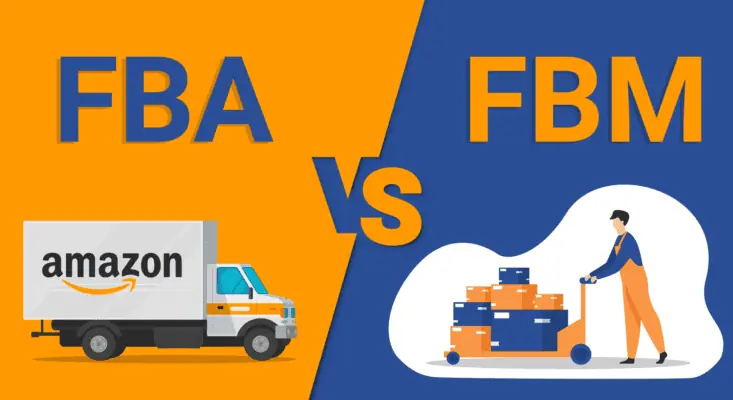How to Choose an Amazon Fba vs Fulfillment Model
When choosing a fulfillment by Amazon program, there are several factors to consider and worth. The first is the size and scale your business model. If you are just starting selling or have a smaller operation for orders fulfillment method, you may want to consider using Amazon’s by Merchant program. This allows you to retain more control over your Fba inventory and shipping, but also requires more effort and coordination on your part. Alternatively, if your business has grown and you need more support, Amazon’s by Amazon (FBA) program may be the better choice. Use FBA, Amazon handles all aspects of warehousing, shipping, and customer service for your products on amazon, freeing up your time to focus on other areas of your business. Other factors to consider when choosing a dropshipping include the types of products you sell, the volume of items seller central plan to want to sell products, and your overall sales strategy. By carefully evaluating these factors, you can make an informed decision about which Amazon Fba seller warehouse is right for your business.

1. Introduce about working of seller on Amazon Fba
Running a successful business with seller account on Amazon store business requires effective dropship business strategies. Choosing the right Amazon warehouse is crucial to ensure efficient order fulfill, fast shipping, and customer satisfaction. In this article, we will explore the various models offered by Amazon multi-channel fulfillment and provide insights to help you make an informed decision. Whether you are a small ecommerce business owner or a seasoned seller, understanding the options available and considering key factors will empower you to select the best for your products.
- Understanding Amazon
Amazon tool is a service provided by Amazon that allows sellers to store their products in Amazon business centers. Once an order is placed, Amazon takes care of the entire, including picking, packing, and amazon also shipping the products to customers. This streamlines the selling on ecommerce, enabling sellers to focus on other aspects of their business, such as marketing and product development.
- Benefits of Using Amazon
Using the Amazon offers numerous advantages to sellers:
- Faster Shipping: Amazon has a vast network of centers strategically located across the globe. This allows for faster shipping times, reducing delivery delays and improving customer satisfaction.
- Prime Eligibility: Products fulfilled by Amazon are eligible for Amazon, a premium membership program that amazon charges free and fast shipping to Prime members. This can significantly increase the visibility and appeal of your products.
- Customer Service: Amazon handles customer inquiries, returns, and refunds on behalf of sellers. Their dedicated customer service ensures a positive shopping experience for buyers.
- Inventory Management: Amazon’s advanced inventory management system helps sellers keep track of stock levels, ensuring efficient restocking and reducing the risk of running out of products.
- Global Reach: By leveraging Amazon, sellers can reach customers not only in their local markets but also across the globe. Amazon’s extensive network enables international shipping and provides access to a vast customer base.
2. Different Amazon Fba vs Fbm Fulfillment
Amazon offers several models to cater to the diverse needs of sellers. Let’s take a closer look at the three primary models:
- By Amazon (FBA)
By Amazon (FBA) is a popular choice among sellers who want Amazon to handle the entire. Here’s how it works:
- Inventory Storage: Sellers send their products to Amazon’s fulfillment option, where they are stored until an order is placed.
- Order Processing: When a customer places an order, Amazon picks, packs, and ships the product on behalf of the seller.
- Customer Service: Amazon handles customer inquiries, returns, and provides support throughout the order.
Pros of FBA:
- Efficiency: With FBA, sellers can leverage Amazon’s expertise in logistics, ensuring fast and accurate order.
- Prime Eligibility: FBA products are eligible for Amazon Prime, enhancing product visibility and attracting Prime members.
- Customer Trust: Amazon’s strong reputation for reliable and timely deliveries can boost customer trust in your products.
- Multi-Channel: FBA can be used not only for Amazon orders but also for orders from other sales channels.
Cons of Amazon FBA:
- Costs : FBA involves fees for storage, picking, packing, and shipping, which can impact profit margins, especially for low-priced or slow-moving products.
- Less Control: Sellers relinquish some control over the selling to Amazon, which may affect customization and branding options.
Seller Fulfilled Prime (SFP)
Seller Fulfilled Prime (SFP) is an alternative that allows sellers to fulfill Amazon Prime shipping orders themselves while still enjoying the benefits of Prime eligibility. Here’s how it works:
- Prime Badge: Sellers must meet Amazon’s stringent performance metrics and shipping requirements to earn the Prime badge for their listings.
- Order Processing: When a Prime order is placed, the seller picks, packs, and ships the product directly to the customer.
- Customer Service: The seller handles customer inquiries, returns, and provides support throughout the order.
Pros of SFP:
- Cost Control: SFP can be more cost-effective for sellers with efficient in-house operations, as they don’t incur storage and shipping fees.
- Greater Control: Sellers retain control over the processing, allowing for customization, branding, and packaging options.
- Improved Profit Margins: By eliminating some fees associated with FBA, sellers can potentially increase their profit margins.
Cons of SFP:
- Prime Compliance: Maintaining Prime eligibility requires meeting strict performance standards, which can be challenging for some sellers.
- Logistics Management: Managing inventory, order, and shipping can be complex, particularly for sellers with high order volumes.
Fulfillment by Merchant (FBM)
By Merchant is a where sellers handle the entire process, including storage, packing, and shipping. Here’s how it works:
- Inventory Storage: Sellers keep their products in their own facilities or warehouses until an order is received.
- Order Processing: When an order is placed, the seller is responsible for picking, packing, and shipping the product to the customer.
- Customer Service: The seller handles customer inquiries, returns, and provides support throughout the order process.
Pros:
- Cost Control: Can be the most cost-effective option for sellers with efficient in-house capabilities, as there are no fees associated with Amazon’s services.
- Flexibility: Sellers have complete control over the process, allowing for customization, branding, and packaging options.
- Inventory Management: Sellers can have direct visibility and control over their inventory levels, making it easier to manage stock and restocking.
Cons:
- Shipping Speed: FBM may result in longer shipping times compared to FBA or SFP, especially for sellers located far from customers.
- Lack of Prime Eligibility: FBM products are not automatically eligible for Amazon Prime, which can limit visibility and potential sales.
- Customer Trust: Some customers prefer the reliability and convenience of Amazon’s services, which it may not provide.

3. Factors to Consider when Choosing an Amazon Fba Business Fulfillment Model
When deciding which Amazon is right for your business, consider the following factors:
- Product Characteristics
The nature of your products plays a significant role in selecting. Consider factors such as size, weight, fragility, and special handling requirements. For example, FBA may be suitable for small, lightweight items, while might be better for large or delicate products.
- Sales Volume
The volume of sales you anticipate can impact your choice of the one. If you expect high sales volume, FBA’s scalability and efficiency can be advantageous. On the other hand, if your sales volume is low or fluctuates, might be more cost-effective since you won’t incur storage fees.
- Costs
Evaluate the costs associated with each order, including storage fees, picking and packing fees, shipping fees, and any additional charges. Consider your product’s price point and profit margins to ensure that the chosen aligns with your budget and profitability goals.
- Shipping Speed and Prime Eligibility
If fast shipping and Prime eligibility are crucial to your customers, FBA or SFP may be the better options. These provide access to Amazon’s vast network and Prime benefits, ensuring quick deliveries and enhanced customer satisfaction.
- Control and Branding
Consider how much control you want over the process and how important branding and customization are to your business. Amazon’s FBA and SFP offer less control but provide the convenience of Amazon’s infrastructure, while allows for greater customization and branding opportunities.
4. Making the Decision for Selling on Amazon
To get the most suitable Amazon, follow these steps:
- Analyzing Your Business Needs
Assess your product characteristics, sales volume, and operational capabilities. Determine your requirements and identify any specific challenges or goals you have.
- Evaluating the Cost and Pricing Structure
Compare the costs associated, considering factors such as storage, fees, and shipping costs. Calculate how these costs will impact your profit margins.
- Considering Customer Expectations
Understand your target audience and their expectations regarding shipping speed, reliability, and convenience. Select that aligns with these expectations to provide a positive customer experience.
- Flexibility and Scalability
Anticipate your business’s future growth and expansion. Amazon Fba offers the necessary flexibility and scalability to accommodate increased sales volumes and changing business needs.
5. Conclusion about Pros and Cons for Selling on Amazon Fba Work
Selecting the right is vital for the successful Amazon of your e-commerce business. Consider the unique characteristics of your amazon products, your sales volume, costs, shipping speed requirements, and the level of control and branding you desire. By carefully evaluating these factors and understanding the benefits and limitations of each fulfillment and customer service, you can make an informed decision that optimizes efficiency, customer satisfaction, and profitability.
6. FAQs to Fulfillment by Amazon Seller
1. Is it possible to switch between Amazon fulfillment?
Yes, you can switch between fulfillment and customer service on Amazon. However, it’s important to evaluate the implications of such a switch, including potential disruptions to your inventory, fulfillment process, and customer experience. Planning to sell and the transition carefully and consider the impact on your business before making any changes.
2. Are there any restrictions on which products can use fulfillment services?
Certain products, such as hazardous materials, perishable goods, and restricted items, may have limitations or specific requirements when it comes to using fulfillment solutions. It’s essential to review Amazon’s guidelines and policies to ensure compliance and eligibility for the fulfillment center you choose.
3. Can I use multiple fulfillment for different products in my inventory?
Yes, you have the flexibility to use different fulfillment center for different products to sell on amazon and send to amazon within your inventory. This allows you to optimize fulfillment strategies based on product characteristics, sales volume, and amazon customers expectations. Keep in mind that managing multiple fulfillment center may require additional logistical coordination and planning.
4. How can I estimate the costs associated with each fulfillment ?
Amazon provides detailed fee schedules and calculators to help sellers estimate the costs associated with each fulfillment center. Take into account storage fees, fulfillment fees, shipping costs, and any other applicable charges to get a comprehensive understanding of the financial implications.
5. What happens if I decide to stop using Amazon fulfillment services?
If you choose to discontinue using Amazon fulfillment, you will need to handle the fulfillment process independently. This includes storing inventory, picking, packing, and shipping orders. Make sure to update your product listings and communicate any changes to customers to avoid confusion and ensure a smooth transition.
Remember, selecting the right Amazon fulfillment center and create an amazon requires careful consideration of your unique business needs, product characteristics, customer expectations, and cost factors. By weighing these factors and understanding the benefits and limitations of each model, you can make an informed decision that sets your business up for success in the Amazon marketplace.
Private Agent for Dropshipping Success